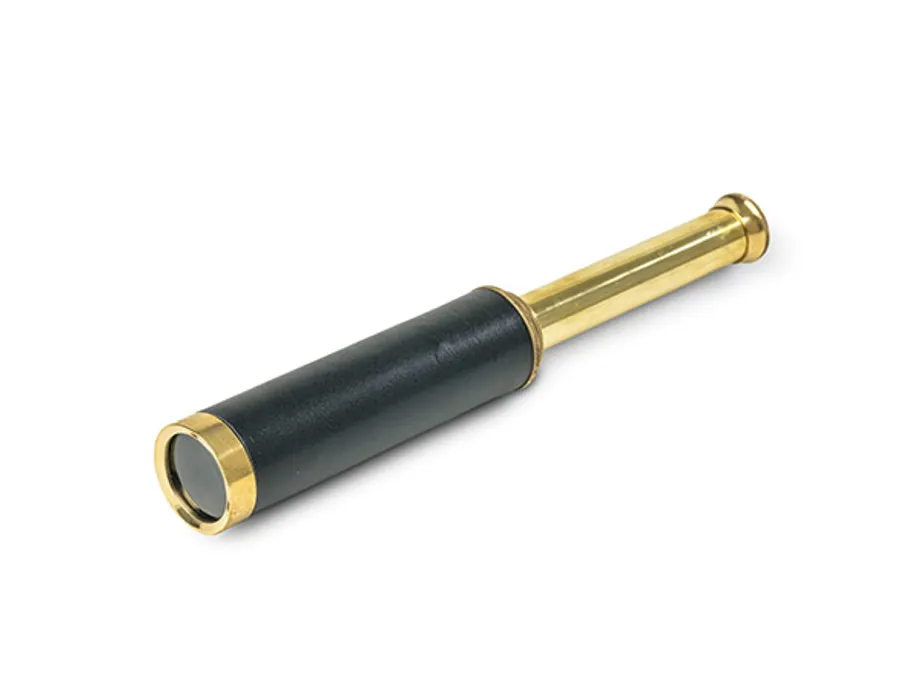Telescope
A telescope is an instrument that aids observation of remote objects by collecting electromagnetic radiation (such as visible light).
The first known practical telescopes were invented in the Netherlands at the beginning of the 17th century, using glass lenses. They found use in terrestrial applications and astronomy. Within a few decades, the refracting telescope was invented, which used mirrors.
In the 20th century, many new types of telescope were invented, including radio telescopes in the 1930s and infrared telescopes in the 1960s. The word telescope now refers to a wide range of instruments detecting different regions of the electromagnetic spectrum.
Hand-held marine telescope
This object is a modern version of an old mariners spyglass (telescope), sometimes called a monocular. A monocular is a modified refracting telescope used to magnify the images of distant objects by passing light through a series of lenses and sometimes prisms; the use of prisms results in a lightweight telescope.
Monoculars produce 2-dimensional images, while binoculars add perception of depth (3 dimensions). A monocular with a straight optical path is relatively long; prisms can be used to fold the optical path to make an instrument which is much shorter.

